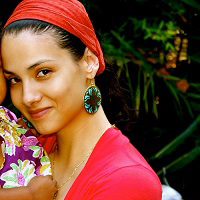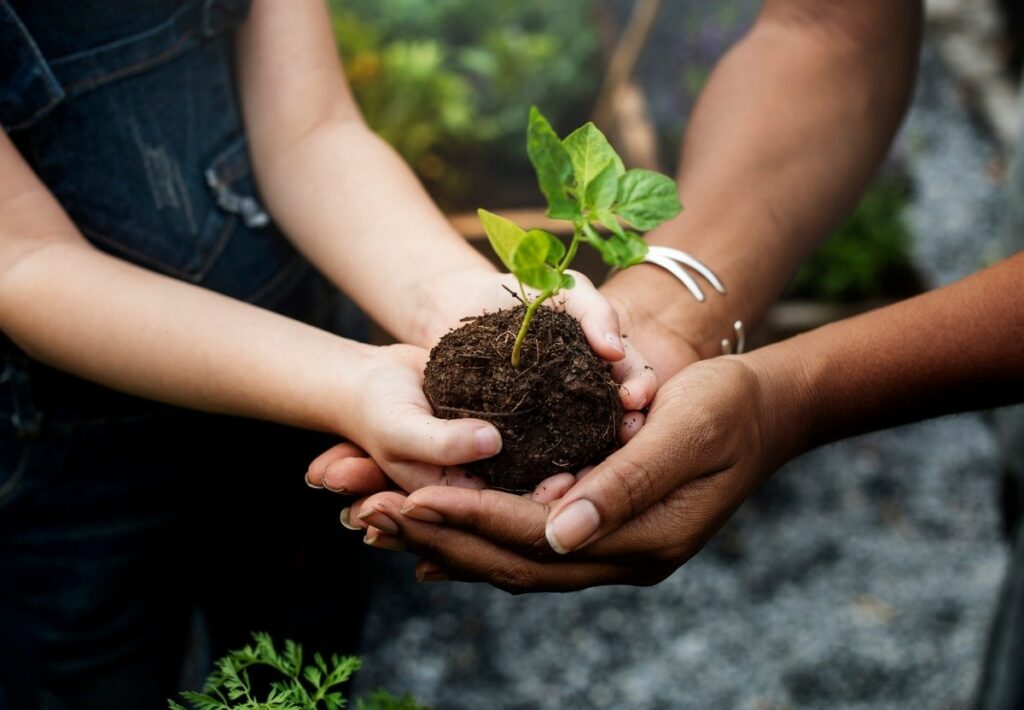Habits form early on. Whether good or bad, habits stick to us like gum on a shoe. Instilling healthy eco-friendly habits is best started young. It’s our job as guardians of the planet and as parents to ensure the Earth’s health as well as the health of our children (and our children’s children’s children).
Embark on an eco-conscious lifestyle with your kids for a perfect opportunity to bond and play together. Instead of making these activities like a chore, make them fun experiences so your younglings are more likely to continue the behavior in the future.
1. Start a compost bin
Anything that prevents more garbage in landfills is a huge plus. Starting a compost bin is a fun way to teach kids how to go green. Red wiggler worms are fun to watch and kids have blast holding and/or being grossed out by them. It’s surprisingly much easier than people think. If you have any questions about vermiculture, there are so many great resources online that can walk you through the process.
The compost from red wigglers is the ultimate elixir for your indoor plants or garden which increases plant health and encourages growth. Worm composting is a great segue to teach about eco-consciousness. If worms creep you out, there are so many other easy ways to compost. From a scrap pile in the backyard to a simple countertop compost tin.
There are really no more excuses for throwing away organic material and enlisting kids is a great incentive to start composting.
2. Turn cardboard boxes into art projects
The amount of cardboard boxes thrown away is ridiculous. Some of the funnest art projects I’ve done with my kids involved cardboard boxes. Depending on the size of the box you can make a spaceship, doll house or even theatre props like swords, crowns, and magic wands. There are also so many people who need empty boxes for moving etc. post empty boxes on the Internet and give them away for free. These should never be put in the dumpster!
3. Start an organic garden
There’s nothing more magical than planting a seed and watching it grow. Through a beginners mind and child’s eye, it’s amazing! Go green by starting a garden and making meals from the herbs and produce reaped. This would be a good time to talk about why to choose organic foods as opposed to conventionally grown crops.
4. Care for a plant
Give your kids the responsibility of caring for a plant. Teach them when the soil is dry – water it, and when it’s wet – leave it be. This can be a clever intro into getting kids exciting about science. Explain the symbiosis between plants and humans and the exchange of carbon dioxide and oxygen.
Furthermore, it’s a wonderful avenue to teach responsibility, which is practice for bigger responsibilities like proper care of a pet in the future. It also empowers children and makes them feel mature and important.
Read also – 9 Most Common Parenting Mistakes
5. Plant some trees
You’ve heard this one a thousand times, but have you done it? You can make it a special occasion on National Arbor Day or on Earth day, but try and repeat this one. You can make a schedule to go back and not only say hi to your growing trees, but also to plant more. Planting a tree in your yard works too!
6. Repurpose furniture
If you’ve never heard of mod podge, get some. You can create designer looking repurposed furniture pieces from things like picture collages and craft paper. Paint also works wonders on used furniture and kids know how to create one-of-a-kind abstract pieces.
Give them creative freedom, because even if it turns out to be downright ugly – you can always sand it down and paint it over with a solid color.
7. Fun with toilet paper rolls
It may sound strange, but consider it. Think of the amount of toilet paper you use per month instead of looking at the tiny roll. When small things are overlooked, they can become a big, gigantic problem, like our pacific garbage patch. I save all old toilet paper rolls for fun art projects.
Check out pinterest for an abundance of creative crafts with your little ones. From a painted wall decal to animal puppets – the possibilities are endless.
8. Shop responsibly
Don’t be afraid of thrift and consignment shops. Most are very particular about the clothes they chose and are typically barely worn. Not only are the clothes up to less than half the price, but these are one of the only places you can find vintage, one-of-a-kind items.
If you can’t bare to wear used clothing, then research companies that are green and eco-friendly. Explain to your children what sustainable means and opt for companies that give back by donating a portion of their proceeds to environmental charities and other worthy issues.
9. Recycle
Make it their job to sort the glass from the plastic. Make a chart and create different bins to make it extra fun for them to figure it out. Again, this can be their responsibility and it also teaches sorting and can easily be an exercise in math. Tell them what recycling means and what happens to your old bottles and plastic after you recycle it.
10. Donate
Clothes, toys, shoes, any- and everything! If there are shoes your child doesn’t wear or toys they cease to play with, take it to your local charity. Or better yet, take a trip to a local children’s hospital around Christmas time. Kids can grow attached to toys, but when you explain that some kids are less fortunate and if they are actually able to see other children’s faces light up with their old toy, they’ll be changed for life.
Read also – 7 Useful Habits You Should Teach Your Children
Incorporating eco-conscious habits into daily life extends beyond recycling or reducing waste; it’s about fostering a deep respect and understanding of our environment in our children. These are only a few ways to develop eco-consciousness in your child, but the list continues to expand and grow. Please share ways that you teach your child to be green below, so we can spread the word.

